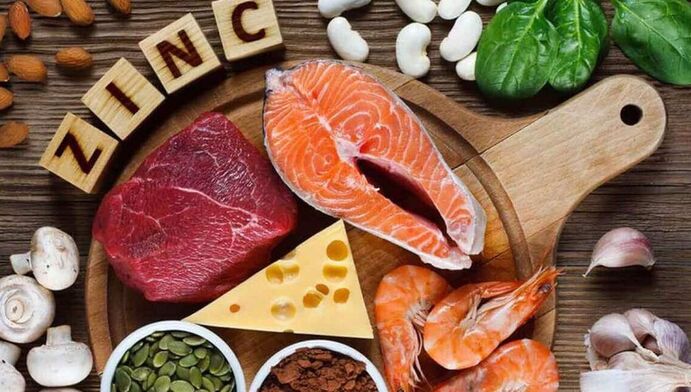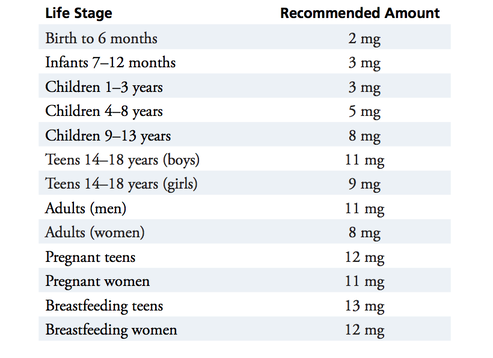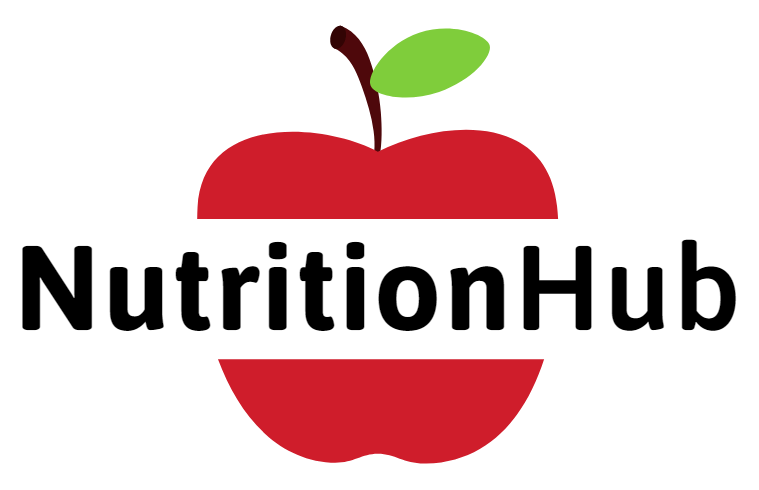|
Content contributed by Tess Regan, IUPUI Dietetic Intern What is zinc and why do we need it? Zinc is an essential mineral, meaning it is necessary for good health. Vitamins and minerals are types of nutrients used to help the body work. Some minerals we need in major amounts and some we need trace amounts. We need large amounts of major minerals but small amounts of trace minerals. Zinc is a trace mineral, so we only need a small amount each day. Zinc cannot be made or stored in the body, meaning we must have a steady supply through the food we eat. It is found in food sources and nutrition supplements. Zinc is used to help us fight off colds and heal wounds. The body also uses zinc to make our DNA and help us grow and develop during childhood. How much zinc do I need in a day? Children should consume 3-5 milligrams of zinc daily. Teenage boys and adult men should consume 11 milligrams of zinc daily. Teenage girls and adult women should consume 8-9 milligrams of zinc daily. (For reference, one milligram is about the size of one grain of sugar or sand.) Refer to the chart below for specific suggestions: Chart from nih.gov/pdf/factsheets/Zinc-Consumer.pdf Which foods contain zinc? Zinc is found in a wide variety of foods. The best source of zinc is in oysters, which can be hard to come by. Red meat, chicken, and seafood are other great animal sources of zinc. Beans, nuts, seeds, and whole grains are great plant alternatives sources of zinc. Zinc can also be found in fortified cereals, dairy products, and even cough drops and multivitamins!  Photo from thefitglobal.com How do I know if I am getting enough zinc in my diet?
The amount of zinc in your body can be measured through a sample of blood. However, there are some physical warning signs that may hint at low levels of zinc. These can include weight loss, wounds that don't heal, decreased sense of smell and taste, diarrhea, and decreased appetite. Zinc deficiency is not common in the United States. Most people get enough zinc through the foods they eat. However, some groups of people may be at a higher risk for zinc deficiency. These include:
Do I need to take a zinc supplement? A supplement, such as a multivitamin or shake, is not necessary for most people. Individuals who eat meat, beans, nuts, and/or whole grains are likely meeting the daily requirements of zinc. However, over-the-counter supplements are available for individuals who may not get enough zinc in their diets. Be sure to talk to your doctor or a dietitian before taking any supplements. The best way to maintain healthy levels of zinc is to include a variety of foods in your diet! Sources Used: https://nih.gov/pdf/factsheets/Zinc-Consumer.pdf https://ods.od.nih.gov/factsheets/Zinc-HealthProfessional/ https://www.healthline.com/nutrition/zinc Comments are closed.
|
AuthorsStaff Registered Dietitians at Gleaners Food Bank of Indiana, along with guest blog posts by dietetic interns Archives
August 2023
Categories
All
|


 RSS Feed
RSS Feed